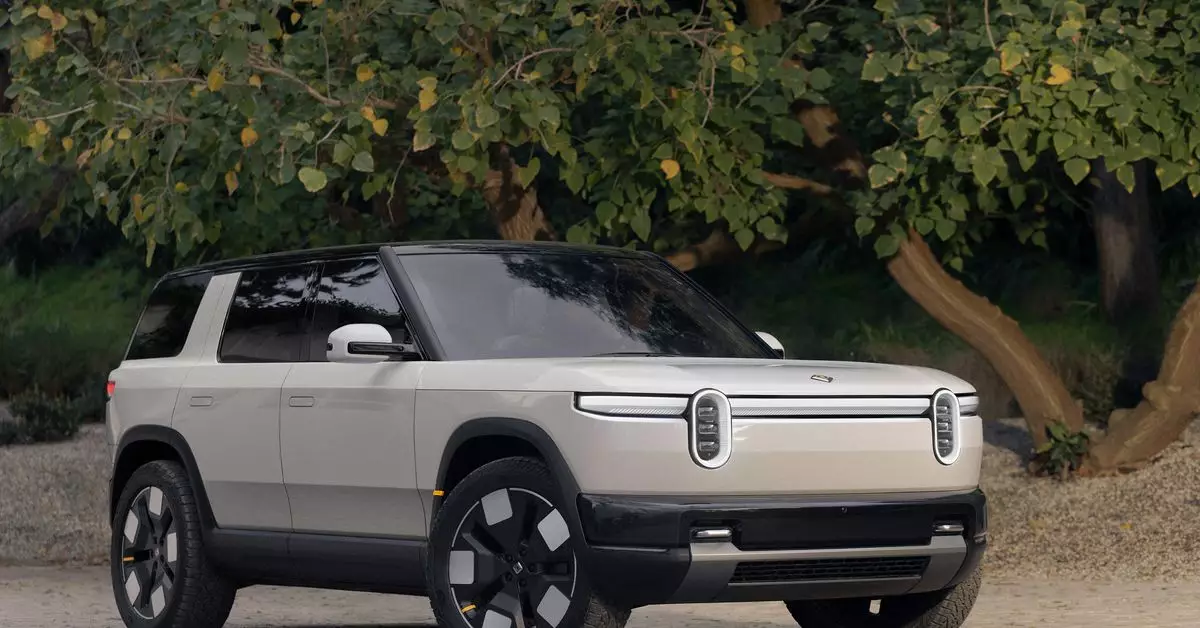As the electric vehicle (EV) market continues to evolve, companies like Rivian are making bold moves to secure their position amid increasing competition and regulatory pressures. From the recently unveiled R2 series to their partnerships with battery manufacturers, Rivian’s strategic decisions reflect an acute awareness of the changing landscape in automotive production. The company aims to create a more cost-effective, efficient production model while responding to government initiatives aimed at fostering domestic manufacturing. This article explores the implications of Rivian’s latest developments, particularly the transition to U.S.-made batteries and the potential challenges that lie ahead.
Rivian’s R2 series was first teased in March, with an introductory price tag of $45,000 aimed at capturing a broader audience. This move signifies a crucial pivot for the company, previously known for its high-end R1T and R1S models that cater to affluent consumers. The R2 series has been positioned as a more accessible electric SUV, intended to compete directly with established automotive giants entering the EV space. By lowering entry costs, Rivian is not just expanding its customer base, but also attempting to accelerate the mainstream adoption of electric vehicles.
Central to Rivian’s new strategy is its collaboration with South Korea’s LG Energy Solution, which will manufacture the new 4695 battery cells domestically in the U.S. This marks a departure from Rivian’s previous reliance on Samsung SDI for battery cells produced overseas. The strategic choice to partner with LG reflects Rivian’s intent to comply with the Inflation Reduction Act (IRA), which incentivizes domestic production of EV components through substantial tax credits. Compliance with such regulations not only enhances Rivian’s eligibility for financial support but also positions the company favorably against competitors who may be slower to adapt to these changing landscape dynamics.
Rivian’s new battery packs promise significant enhancements in terms of weight and manufacturing complexity. According to company reports, the next-generation battery will reduce the overall number of cells required, thus streamlining the assembly process. Rivian anticipates a 45 percent improvement in efficiency from these changes—a crucial factor in reducing production costs and delivering products to market faster. This move could fundamentally alter how Rivian approaches manufacturing, making it an agile player capable of adapting to the fast-paced demands of a rapidly evolving market.
While Rivian has made impressive strides, the market remains fraught with uncertainties, particularly given the possibility of political shifts that could impact EV subsidies. With the 2024 elections looming and potential policy changes proposed by Donald Trump, Rivian’s future hinges on both federal support and consumer adoption rates. The company’s long-term survival may depend on its ability to navigate this rollercoaster of regulatory changes while maintaining a competitive edge in an increasingly saturated EV landscape. This scenario poses a formidable challenge, especially for a relatively young company like Rivian.
The announcement of the R2 series and the shift towards domestic battery production represents a significant evolution in Rivian’s strategy. However, success hinges on a delicate balance of cost management, technological innovation, and responsiveness to market demands. Rivian’s commitment to manufacturing in the U.S. aligns with national interests, catering to a rising consumer demand for sustainable practices and products. Yet, the challenges posed by potential shifts in administration policies and external economic pressures may test the resilience of both Rivian and the broader electric vehicle sector.
As Rivian embarks on the production of its R2 vehicles and domestic battery manufacturing, it stands at a crossroads defining its future in the electric vehicle industry. The interplay between affordability, innovative manufacturing, and regulatory compliance will shape its trajectory. Rivian’s ability to adapt and thrive amidst challenges will not only influence its destiny but also serve as a litmus test for the sustainability of electric mobility in America. The journey is far from over, and Rivian’s next steps will be closely watched by industry insiders and consumers alike.

